🌏 Cultural Anthropology: Essential Concepts for Reading Comprehension
Cultural anthropology explores the diversity of human cultures, examining their practices, beliefs, and social structures to understand how people live and interact within their environments. It delves into topics like kinship, rituals, and globalization to analyze how culture shapes identity and societal norms. RC passages on this topic often highlight anthropological theories and real-world applications. Understanding these concepts provides a lens through which readers can critically evaluate cultural practices and their significance.
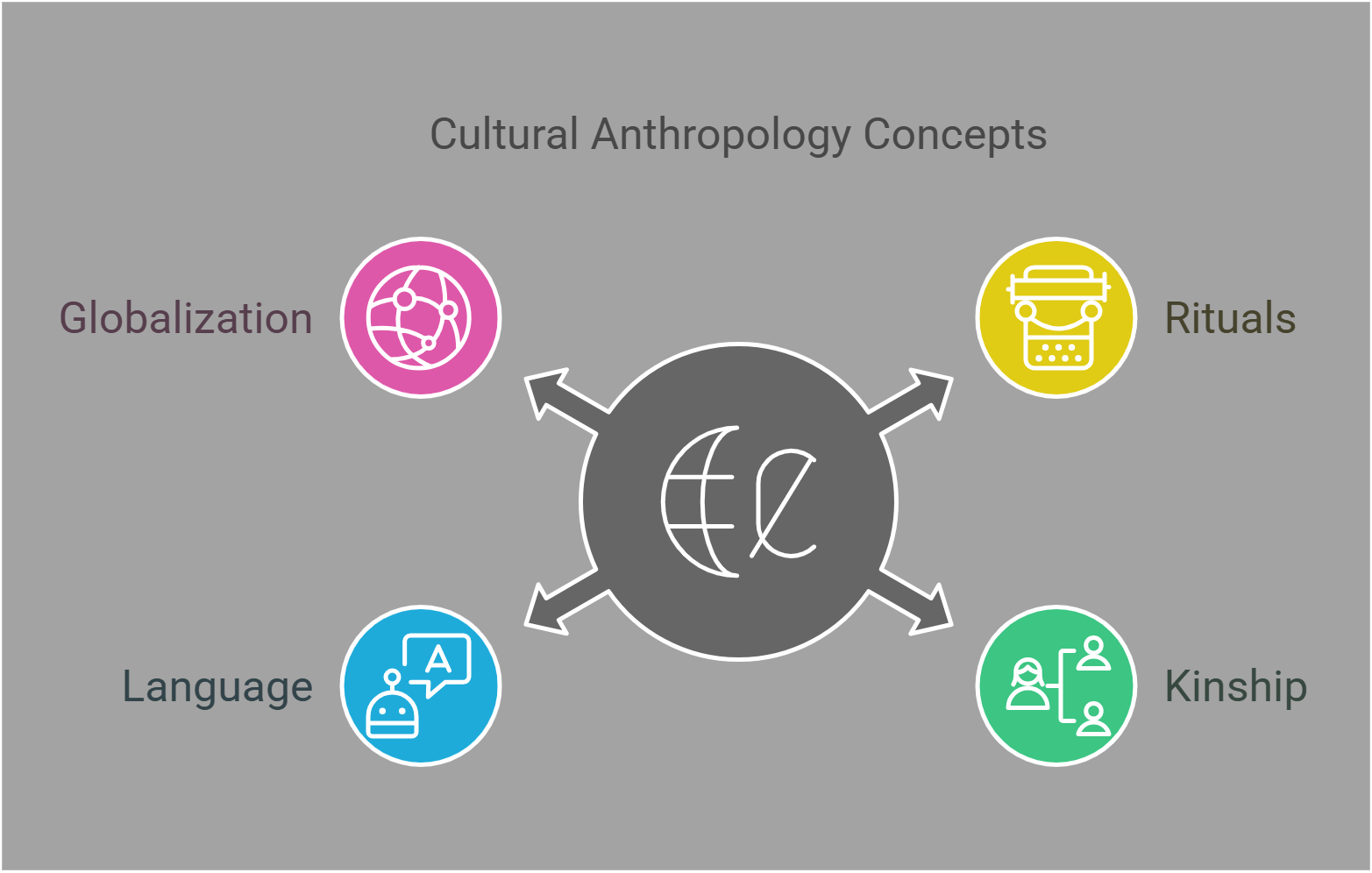
📋 Overview
This guide explores the following essential concepts in cultural anthropology:
- Cultural Relativism
- Ethnocentrism
- Kinship Systems
- Totemism
- Rites of Passage
- Language and Culture
- Material vs. Non-Material Culture
- Globalization
- Indigenous Knowledge
- Postcolonialism
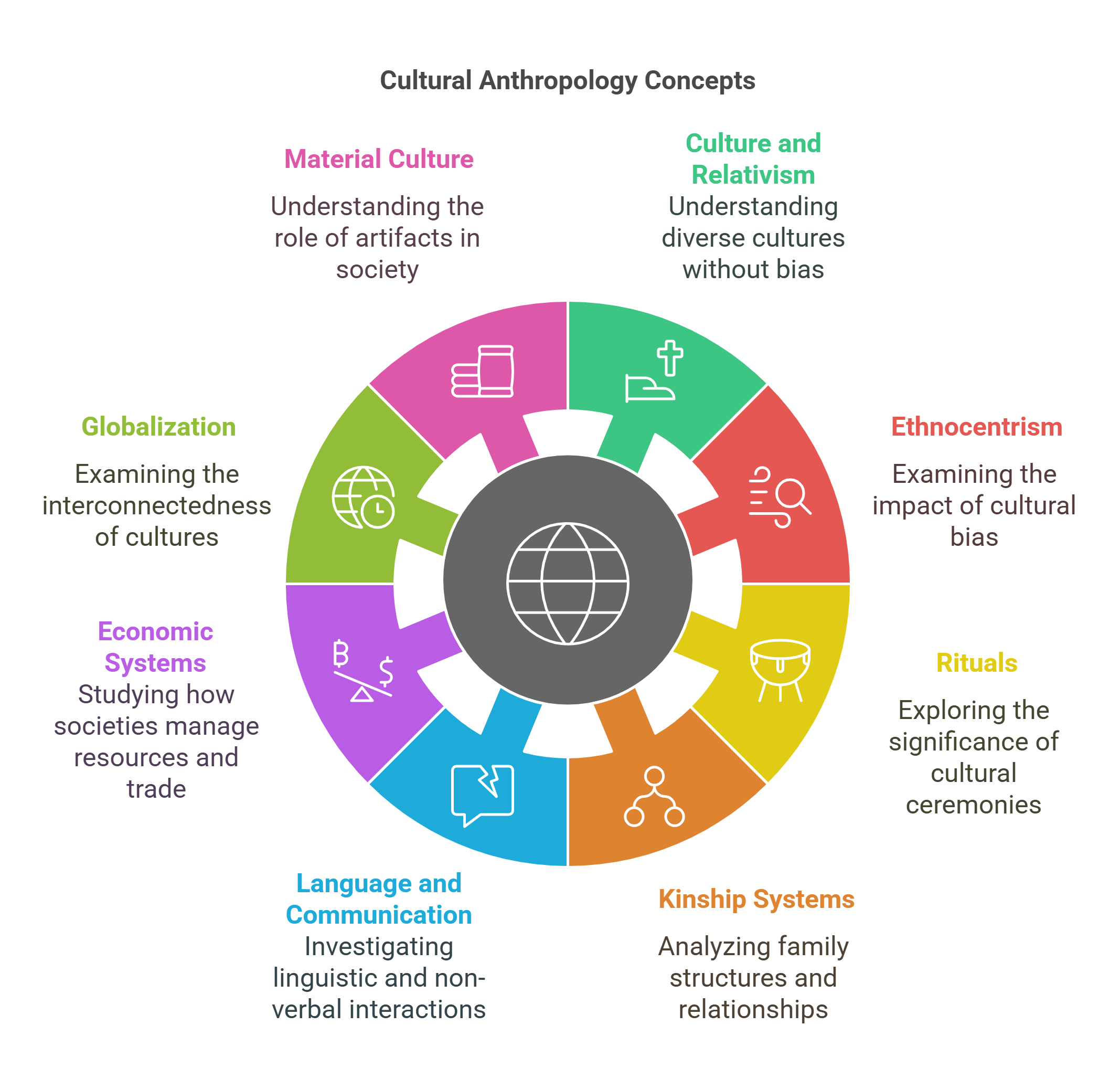
🔍 Detailed Explanations
1. Cultural Relativism
Cultural relativism is the principle of understanding and evaluating cultural practices within their own context rather than judging them by the standards of another culture. It was popularized by anthropologists like Franz Boas to counter ethnocentric biases.
- Core Ideas:
- Cultures are unique and internally coherent systems of meaning.
- Practices that may seem strange or immoral to outsiders often have logical explanations within their cultural context.
Applications:
- Enables anthropologists to study societies without imposing external moral judgments.
- Promotes tolerance and reduces cultural misunderstandings.
Example: While arranged marriages may seem restrictive from a Western perspective, they often serve social and economic functions in cultures where family alliances are prioritized.
Explained Simply: Cultural relativism is like wearing another culture’s glasses to see the world through their perspective.
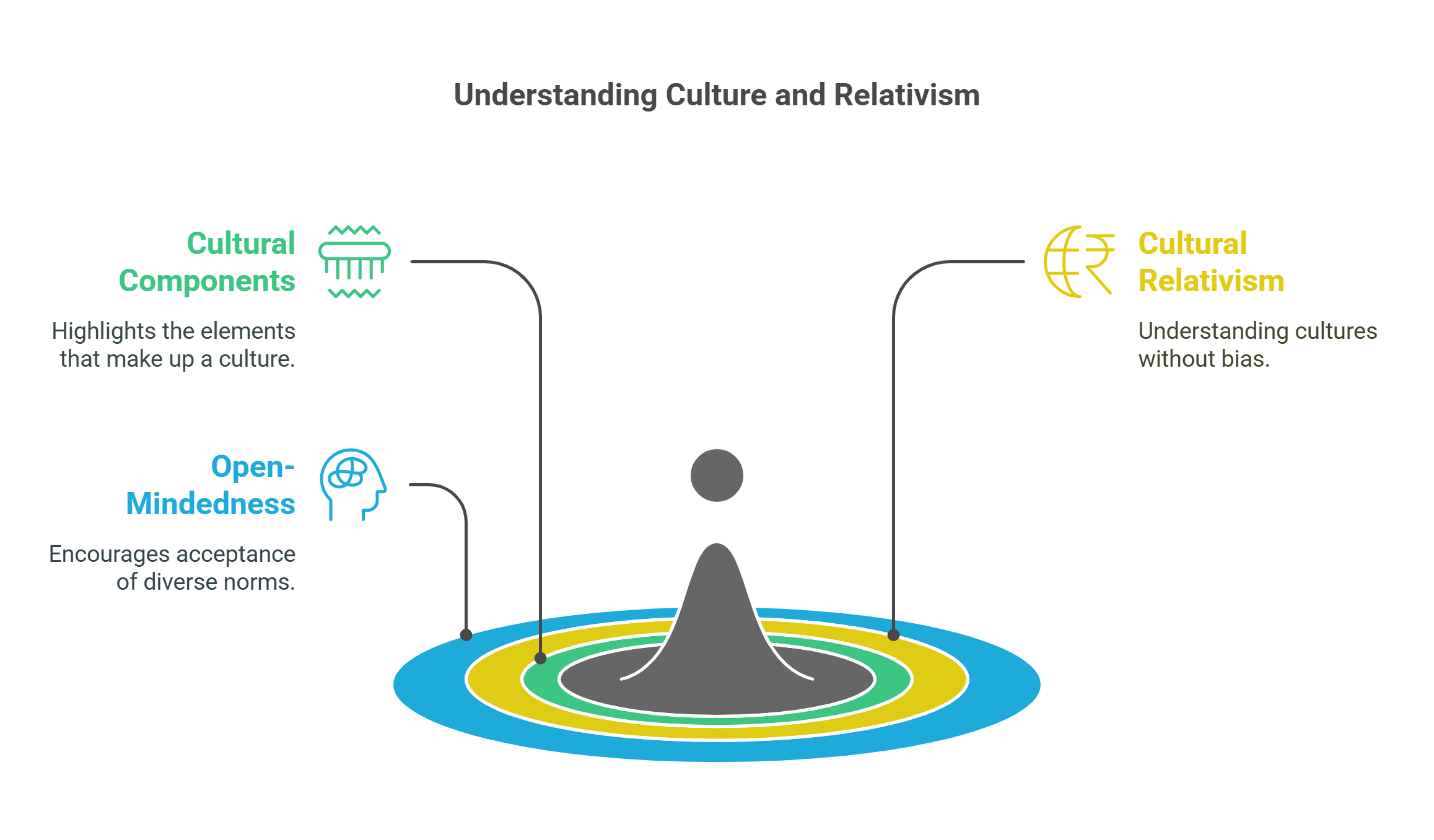
2. Ethnocentrism
Ethnocentrism is the tendency to view one’s own culture as superior and to use it as the standard for judging other cultures. It often leads to misunderstandings, stereotypes, and cultural biases.
- Key Features:
- Belief that one’s customs, values, and practices are “normal” or “correct.”
- Dismissal of other cultures as inferior, primitive, or irrational.
Impact:
- Fuels cultural conflicts and hinders cross-cultural communication.
- Encourages colonialism and cultural imperialism, where dominant cultures impose their values on others.
Example: European colonizers viewing Indigenous spiritual practices as “pagan” and suppressing them in favor of Christianity.
Explained Simply: Ethnocentrism is like seeing the world through a mirror that reflects only your culture.
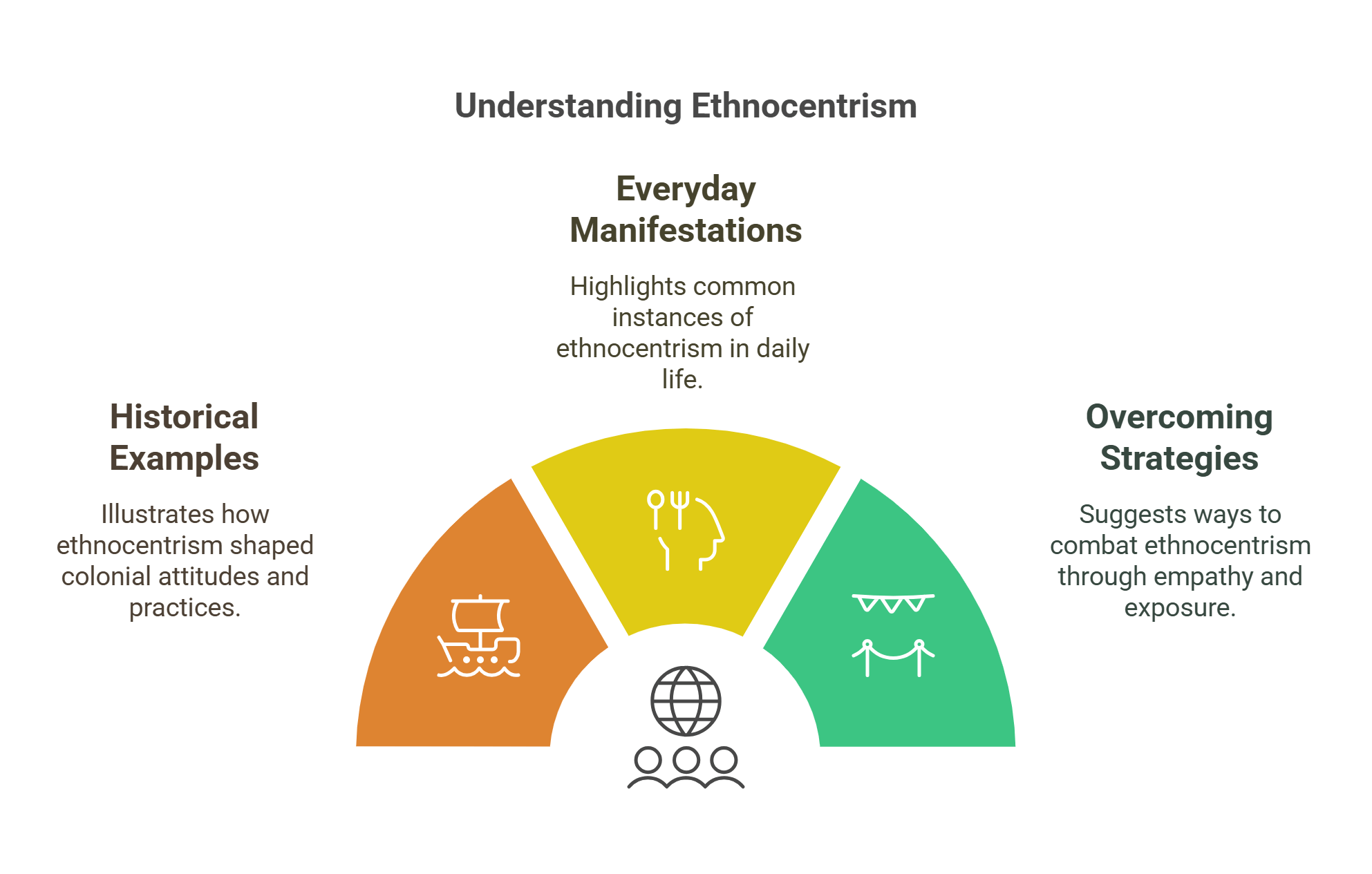
3. Kinship Systems
Kinship systems refer to the social relationships and structures that define family, inheritance, and social roles within a culture. They shape how individuals relate to one another and organize their lives.
- Types of Kinship Systems:
- Patrilineal: Descent and inheritance are traced through the father’s lineage (e.g., many African and Asian societies).
- Matrilineal: Descent and inheritance follow the mother’s line (e.g., the Navajo and Minangkabau).
- Bilateral: Descent is traced through both parents (e.g., most Western societies).
Functions of Kinship:
- Establishes social roles, such as caregiver, protector, or provider.
- Regulates marriage, alliances, and property rights.
Example: In matrilineal societies, children often inherit land or titles from their mother’s family.
Explained Simply: Kinship systems are like a cultural map of relationships, showing who belongs where and why.
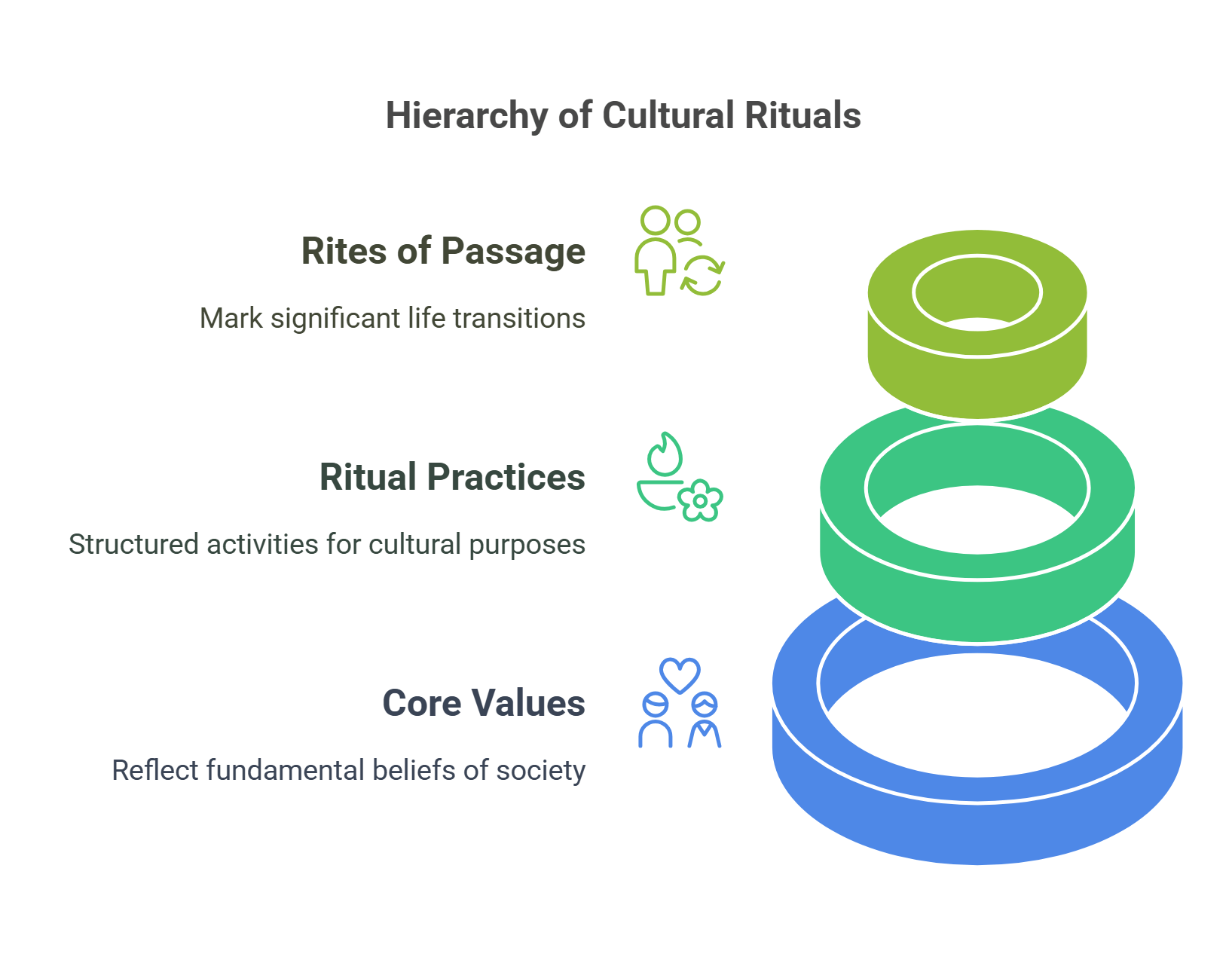
4. Totemism
Totemism is a belief system in which a group of people claims a spiritual connection with a particular animal, plant, or natural object, known as a totem. It is often tied to social organization, identity, and rituals.
- Key Characteristics:
- Totems symbolize unity and ancestry for clans or tribes.
- Rituals and taboos are often associated with totems to honor their significance.
Anthropological Importance:
- Highlights the role of symbols in organizing social groups.
- Demonstrates the interconnection between nature and culture in Indigenous worldviews.
Example: Australian Aboriginal groups use totems to define clan identity and responsibilities within their ecosystems.
Explained Simply: Totemism is like a family crest, but with spiritual and ecological meanings tied to nature.

5. Rites of Passage
Rites of passage are ceremonies or rituals that mark significant life transitions, such as birth, puberty, marriage, or death. These rituals help individuals and communities navigate changes in social status or identity.
- Stages of Rites of Passage (Arnold van Gennep):
- Separation: The individual is removed from their previous role or status.
- Liminality: A transitional phase of uncertainty and transformation.
- Incorporation: The individual is reintegrated into society with a new role or identity.
Examples:
- Maasai boys undergo circumcision ceremonies to transition into manhood.
- Weddings symbolize the transition from singlehood to married life.
Cultural Significance:
- Reinforces social norms and community bonds.
- Provides structure and meaning to life’s changes.
Explained Simply: Rites of passage are like bridges, helping people cross from one stage of life to the next.
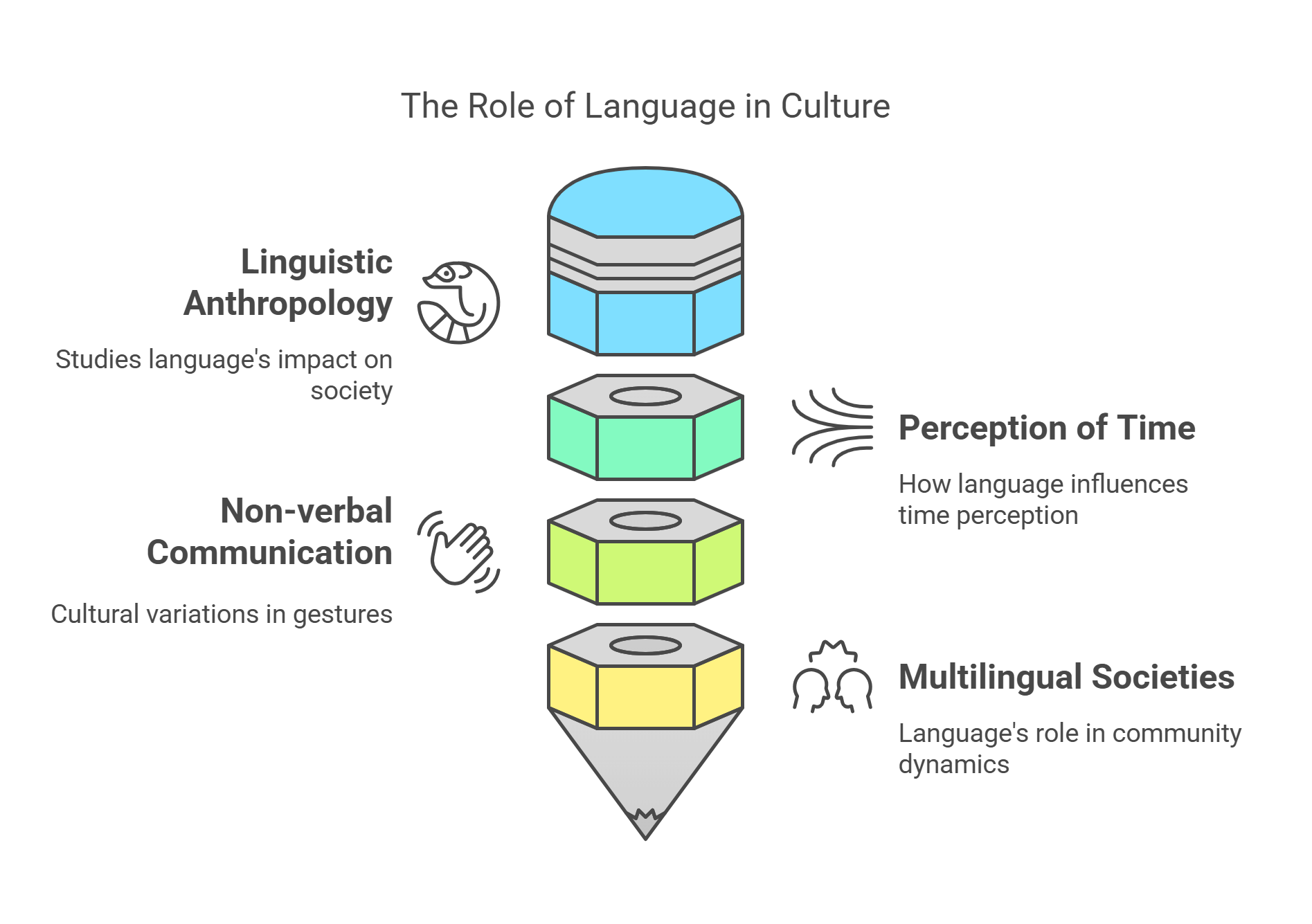
6. Language and Culture
Language is more than a communication tool—it reflects and shapes cultural identity, thought processes, and social relationships. Cultural anthropologists study how language influences and is influenced by culture, revealing the interdependence between the two.
- Key Concepts:
- Sapir-Whorf Hypothesis: Suggests that the structure of a language influences its speakers’ perception of the world.
- Linguistic Relativity: The idea that language reflects cultural values and priorities (e.g., Inuit languages with numerous words for snow).
- Sociolinguistics: Examines how language varies within societies based on factors like class, gender, and ethnicity.
Applications:
- Analyzing how terms of address reflect social hierarchies (e.g., honorifics in Japanese).
- Studying the loss of Indigenous languages as a sign of cultural erosion.
Example: The use of metaphors in different languages reveals unique cultural perspectives, such as describing time as a commodity in English (saving time) versus a journey in other cultures.
Explained Simply: Language and culture are like mirrors, reflecting and shaping each other’s values, thoughts, and identities.

7. Material vs. Non-Material Culture
Cultural anthropologists distinguish between material culture (physical objects and artifacts) and non-material culture (ideas, beliefs, and customs). Both are integral to understanding how societies function and express themselves.
- Material Culture: Includes tools, clothing, buildings, art, and technology that represent a society’s physical achievements.
- Non-Material Culture: Encompasses intangible elements like language, traditions, values, and norms that guide behavior.
Interactions Between the Two:
- Material culture often embodies non-material values (e.g., a national flag symbolizing unity and pride).
- Non-material culture evolves with changes in material culture, such as how smartphones influence communication norms.
Example: Traditional pottery represents material culture, while the stories passed down about its origins reflect non-material culture.
Explained Simply: Material culture is what we make; non-material culture is what we believe—it’s the tangible meeting the intangible.
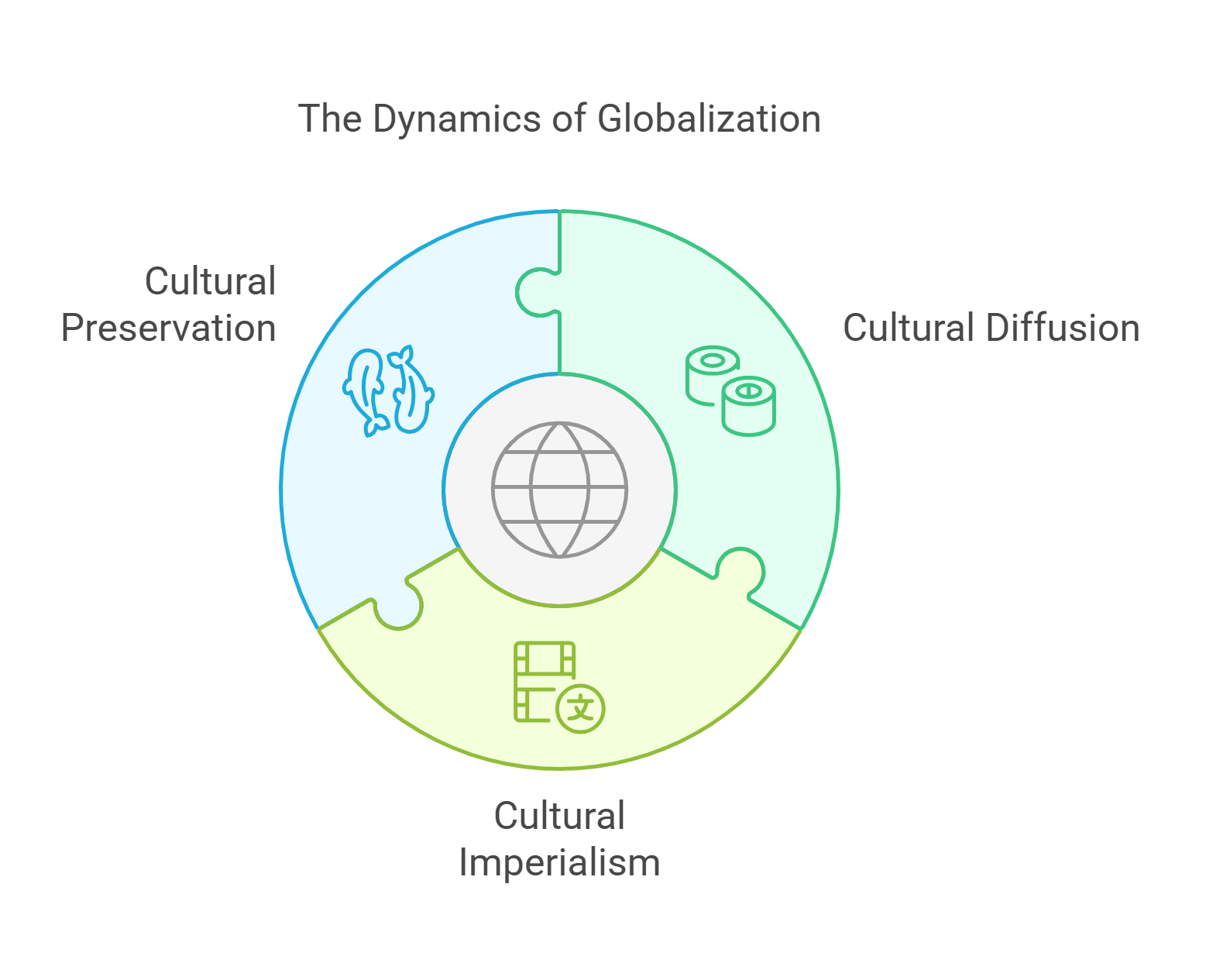
8. Globalization
Globalization refers to the interconnectedness of cultures, economies, and societies through trade, technology, and communication. While it fosters exchange and innovation, it also raises concerns about cultural homogenization and inequality.
- Key Aspects:
- Cultural Exchange: Sharing traditions, food, and ideas across borders.
- Cultural Imperialism: Dominance of one culture over others, often through media or economic influence.
- Hybridization: The blending of cultural elements to create something new (e.g., fusion cuisine).
Impact on Culture:
- Promotes diversity but can erode traditional practices and languages.
- Spurs debates about balancing global connectivity with local identity.
Example: Bollywood films incorporating Hollywood-style production while retaining Indian storytelling traditions.
Explained Simply: Globalization is like a cultural crossroads, where traditions meet, mix, and sometimes compete.
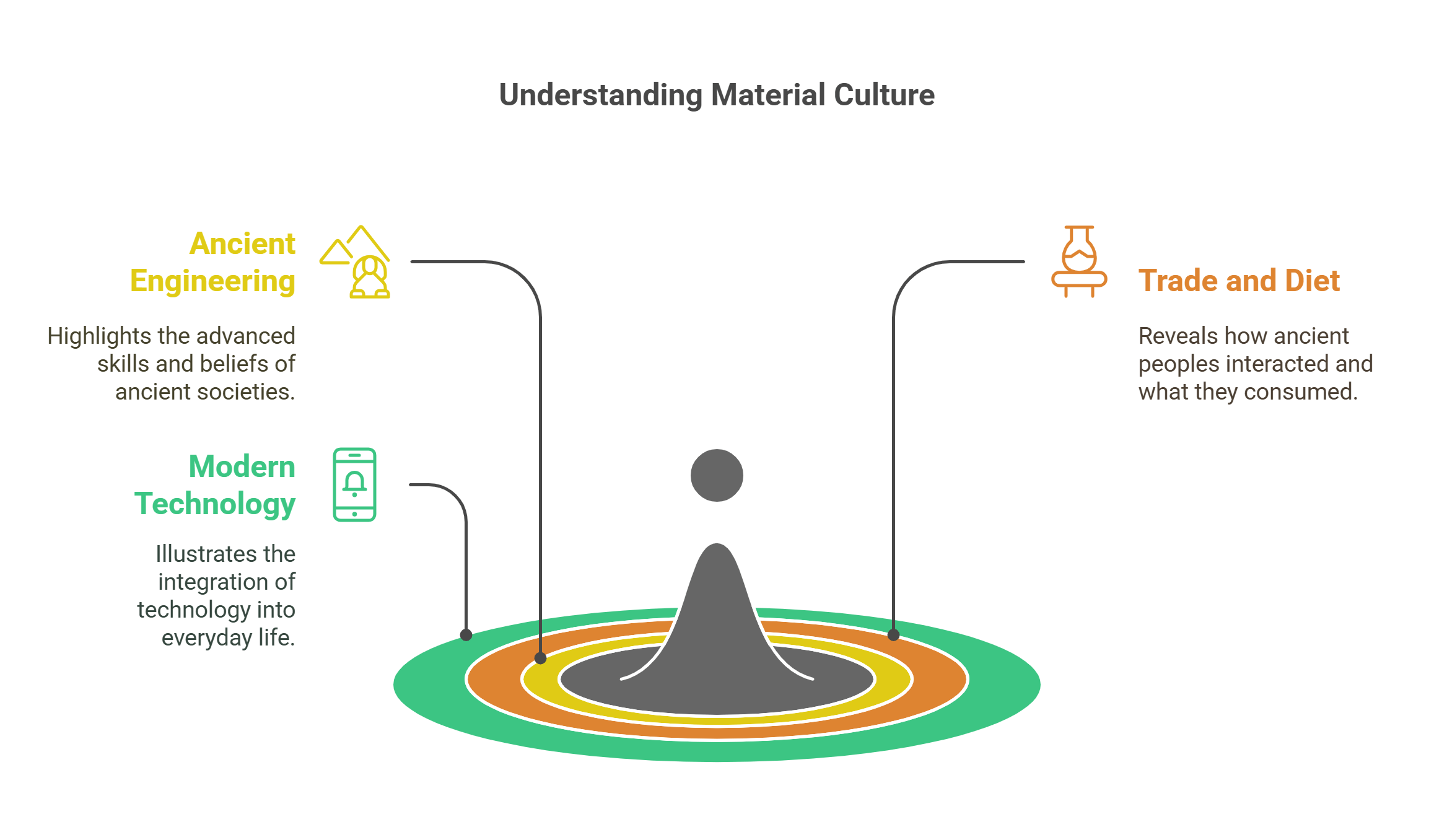
9. Indigenous Knowledge
Indigenous knowledge refers to the unique understandings, practices, and wisdom developed by Indigenous communities through their relationship with the environment. It encompasses ecological, medicinal, and social systems tailored to local needs.
- Key Characteristics:
- Rooted in oral traditions and observation.
- Often holistic, integrating spiritual, ecological, and practical elements.
- Dynamic, evolving through adaptation to environmental changes.
Applications:
- Sustainable resource management, such as rotational farming or fishing practices.
- Conservation efforts that integrate Indigenous perspectives to preserve biodiversity.
Example: The use of controlled burns by Australian Aboriginal communities to manage ecosystems and prevent wildfires.
Explained Simply: Indigenous knowledge is like nature’s manual, honed through generations of experience and observation.
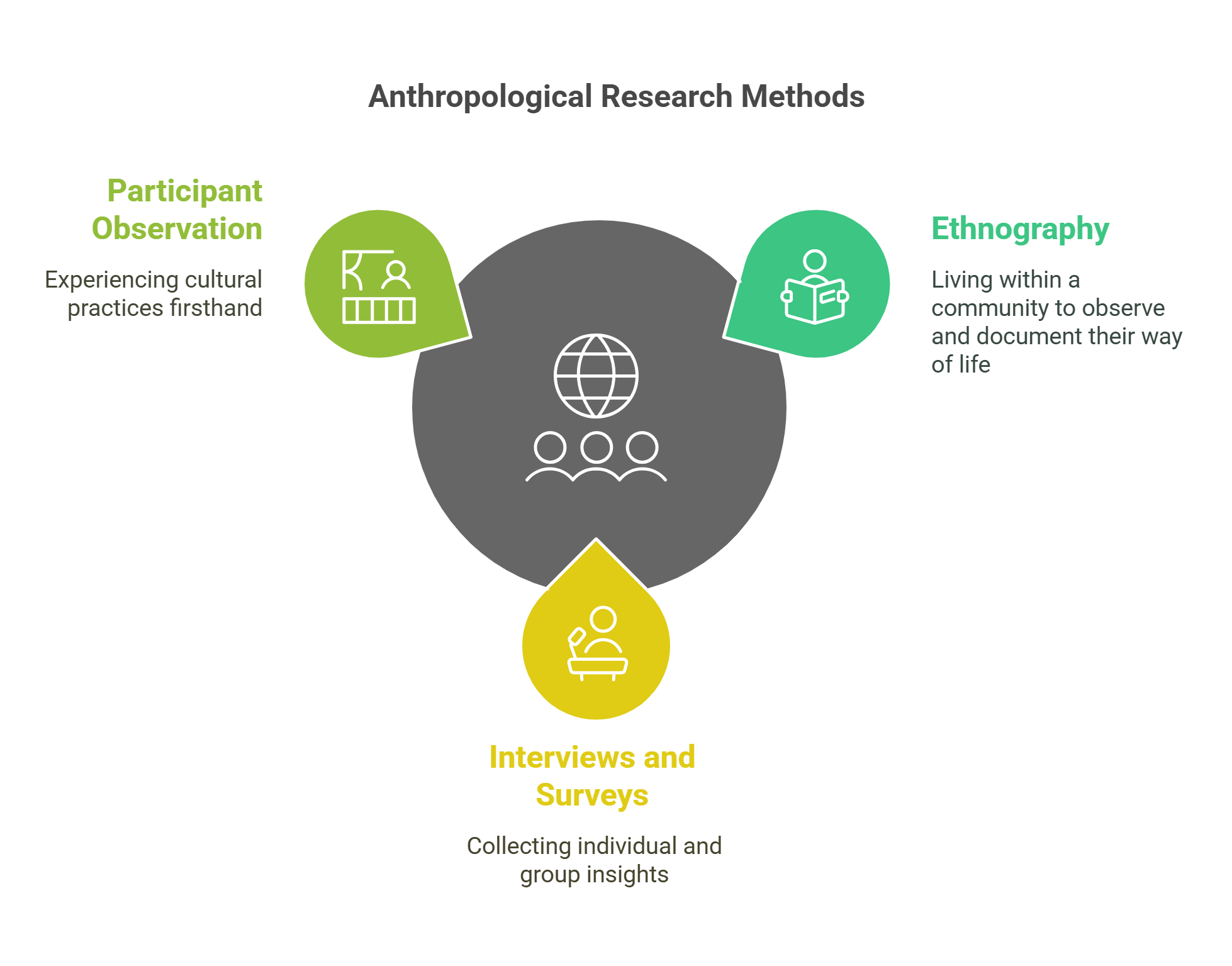
10. Postcolonialism
Postcolonialism examines the cultural, political, and economic legacies of colonialism, focusing on how formerly colonized societies navigate their identities and relationships with former colonial powers. It critiques the inequalities and power dynamics perpetuated by colonial histories.
- Core Themes:
- Cultural Hybridity: The blending of Indigenous and colonial cultures, resulting in new identities.
- Decolonization: Efforts to reclaim Indigenous traditions, languages, and governance systems.
- Critique of Eurocentrism: Challenging the dominance of Western perspectives in global discourse.
Impact on Cultural Anthropology:
- Highlights the ongoing effects of colonialism on cultural identity and social structures.
- Encourages inclusive research methods that prioritize local voices and perspectives.
Example: Postcolonial literature, such as Chinua Achebe’s Things Fall Apart, explores the clash between traditional Igbo culture and British colonial rule.
Explained Simply: Postcolonialism is like reexamining history from the perspective of those who lived it, not just those who wrote it.
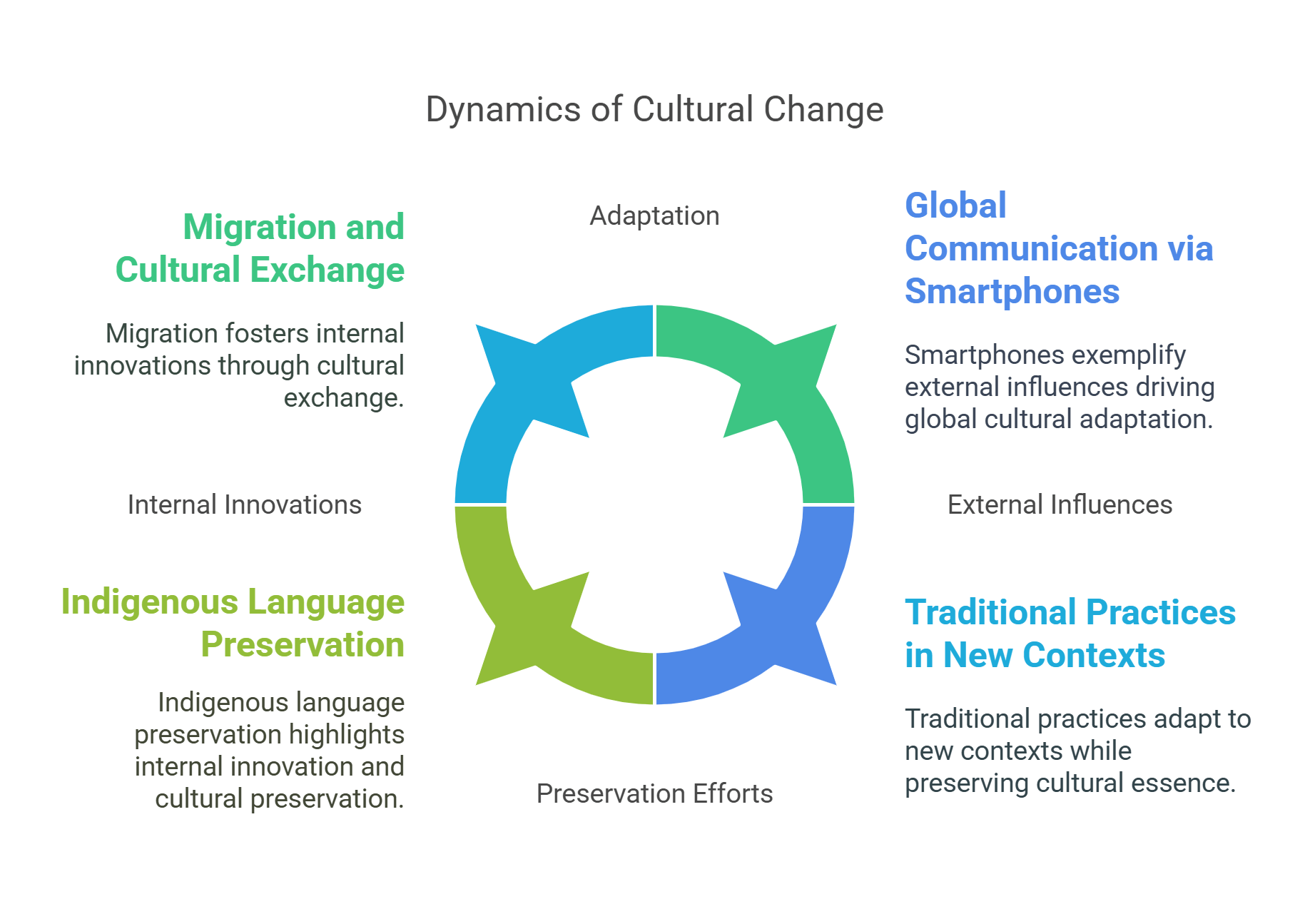
✨ Conclusion
Cultural anthropology offers valuable insights into how humans create, sustain, and adapt their cultures in an interconnected world. By exploring concepts like cultural relativism, rites of passage, and globalization, readers can critically analyze RC passages and deepen their understanding of the diversity and resilience of human traditions.










